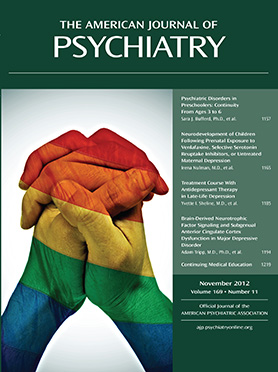The American Board of Psychiatry and Neurology: Looking Back and Moving Ahead
To celebrate the 75th anniversary of the American Board of Psychiatry and Neurology (ABPN), CEO Larry Faulkner, M.D., along with the organization’s current directors, believed that it was important to chronicle a “definitive history of the board,” looking both back and forward and also at the numerous challenges of the recent past and current time (p. 4). The American Board of Psychiatry and Neurology: Looking Back and Moving Ahead achieves these goals.
The book chronicles how joint efforts in the fields of psychiatry and neurology have defined core competencies and a set of standards for trainees to achieve in order to attain certification and to maintain lifelong learning. As Dr. Aminoff notes, the ABPN has defined “a syllabus for trainees, setting national guidelines and standards, as well as the level of competence expected of its trainees” (p. 4). To be able to do this in an era of unprecedented neuroscientific and therapeutic advances is a major accomplishment.
This volume details the trajectory leading to this accomplishment and to the elaboration of future strategic goals. The ABPN’s continuing task is to elaborate core competencies in the specialties of psychiatry and neurology and to develop certifying examinations that will continue to evolve as fair, reliable, and valid. The book’s critical attention to proposals for subspecialty designation is of particular interest and includes discussions of the accompanying tensions.
Part I, titled “Historical Overview,” provides a detailed history of the founding of ABPN. Readers will find the “sketches of selected giants” in neurology and psychiatry both illuminating and, at times, humorous. The book dispels the notion that it was always smooth sailing for those in these two disciplines to work together as they wrestled with their differences. Robert Michels, M.D., quotes Francis Braceland, Psychiatry Director (1946–1952), describing these early tensions: “To get neurologists and psychiatrists of that period … to sit down together without police present was itself an accomplishment for there was always a feeling among the senior neurologists … that neurology was the “Queen of the Sciences” and psychiatry was a young interloper. The psychiatrists in turn said the neurologists preached neurology but practiced psychiatry to make a living” (p. 56).
Although psychiatrists and neurologists no longer sit for an examination requiring demonstration of competency in each specialty, their unified work has resulted in profound changes in the format of the examinations they do take as well as the elimination of lifetime certification. Readers may be surprised to learn how charged the latter decision was. Although not popular with many diplomates, the decision represented dedication to the idea of life-long learning for ongoing competency and the safety of the public. Dr. Victor Reus states that the change to time-limited certification was a “recognition that competency was not a permanent state” (p. 111).
However, the most lengthy, and even contentious, decisions reportedly dealt with whether to eliminate the part II oral examination. Given that numerous authors describe this process, there is some redundancy across chapters. Nonetheless, knowledge of this process and decision is crucial to understanding ABPN’s evolution. The ABPN was the last medical specialty board to require candidates to pass an oral examination with actual patients. The observation of a candidate's interview, clinical assessment, and reasoning was considered essential for demonstrating competency.
Yet, as the cost of conducting these examinations escalated, the potential to test core competencies within the residencies seemed to be a logical alternative. Finally, both specialties voted to eliminate the part II oral examination, gradually phasing it out. Thus, neurology residents graduating in 2008 had their live-patient hour replaced with a clinical skills evaluation within residency training. Similarly, in psychiatry, residents graduating in 2011 had no part II oral examination. As noted, the changes were not only driven by the increasing costs to candidates and to ABPN but also by the inherently stressful nature of the examination and the ongoing efforts of ABPN to improve the fairness, validity, and reliability of its certification process.
In part II, titled “Neurology,” and part III, titled “Psychiatry,” description of the respective examinations and evolution of subspecialties is provided. In neurology, advances in neuroimaging and other diagnostic and treatment options contributed to the development of subspecialties such as stroke, neuromuscular, and neonatal medicine. In psychiatry, the effect of the increase in addiction-related hospital visits, the growth of the aging population, and public attention to high-profile legal cases were factors in the evolution of the subspecialties of addiction, geriatric, and forensic psychiatry. Opponents of additional subspecialties, however, cite concerns about specialty fragmentation and the dilution of broad clinical training.
The fourth and final section, titled “Future Directions,” provides readers with essential and, at times, alarming information. Kevin Weiss, M.D., notes that in spite of increasing public scrutiny of health care quality and cost and the “acceleration of scientific knowledge and medical technology” (p. 265), health care providers are “falling short in their ability to translate new scientific knowledge into improved care” (p. 267). An alarmed public was informed that “problems in knowledge, performance, adherence to standards of practice, and actual health outcomes” increased as physicians aged (p. 286). One large study reported increased patient mortality rates as years of practice lengthened. Board certification, however, was associated with improved results and therefore strengthened the argument for maintenance of certification and lifelong learning.
ABPN’s efforts to protect the public, which is “always ... the cornerstone of its mission” (p. 34), continue. Informing the public of the value of Board certification remains key. As the ABPN strategizes for the future, the unity of psychiatry and neurology is strongly reaffirmed. As this comprehensive volume powerfully testifies, ABPN is “moving ahead.”



